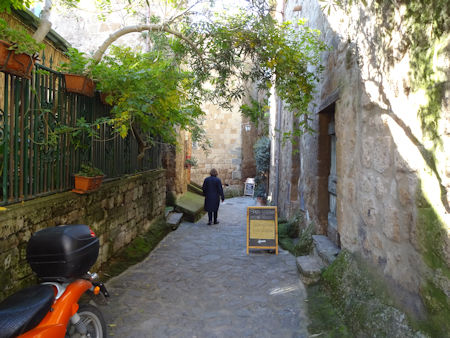
Dwight Peck's personal website
Two weeks in the Lazio region, 2016
Avoiding news of Trump's nightmare "transition team" to the extent possible
You may not find this terribly rewarding unless you're included here, so this is a good time for casual and random browsers to turn back before they get too caught up in the sweep and majesty of the proceedings and can't let go.
The plan is to luxuriate for twelve days in Viterbo, with enthusiastic sight-seeing in the region, and a few days tacked onto either side of that for getting there and back.
Scenes of Civita di Bagnoregio, 2016
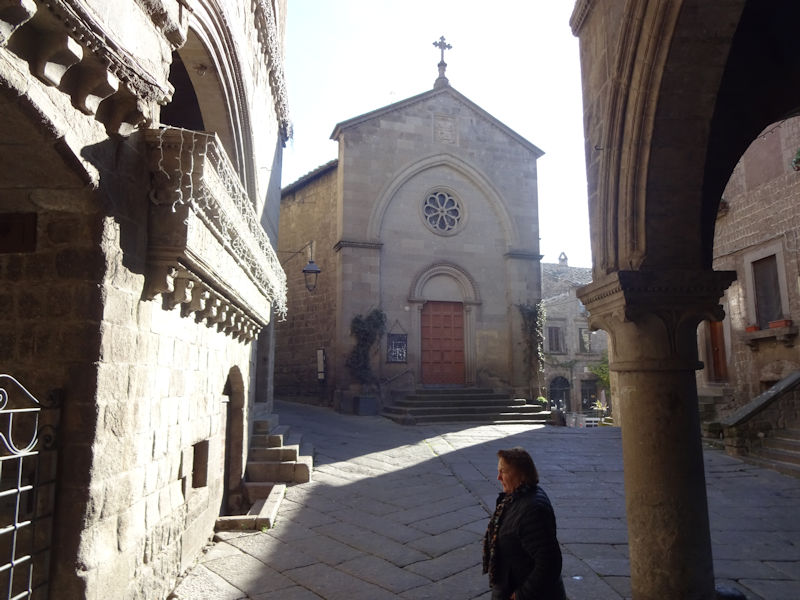
It's a fine day as we're off to visit Orvieto, with a look-in on the way at Civita di Bagnoregio, 28 November 2016. This is our Piazza San Pelligrino in Viterbo and the church of the same name, and the Alessandri Palace.

The Palazzo degli Alessandri. In the continuous battles of the 1230s and ‘40s between the Emperor Frederick II and the Papacy, Frederick considered Viterbo one of his most valuable strongholds near Rome, but the Cardinal Raniero Capocci, a churchman and military leader from Viterbo, one of the Emperor’s fiercest enemies, goaded the Guelph faction amongst the city’s great families to rebel and expel the imperial garrison, who holed up in the city fortress. Pope Innocent IV was able to negotiate a settlement, and the garrison laid down their arms, but were massacred by the citizens. The angry Emperor besieged Viterbo in 1243 but unsuccessfully; the Pope fined the city for the massacre, named his legate Raniero as Bishop of Viterbo, and fled to France.
That’s the long way round to saying that the prominent Guelph family of the Alessandri occupied this palace during the period, but at some point they were forced to flee along with other pro-Guelph families. The palace was spared destruction, though, by a personal intervention of the Innocent IV.

The Via delle Conce leading downhill from the piazza
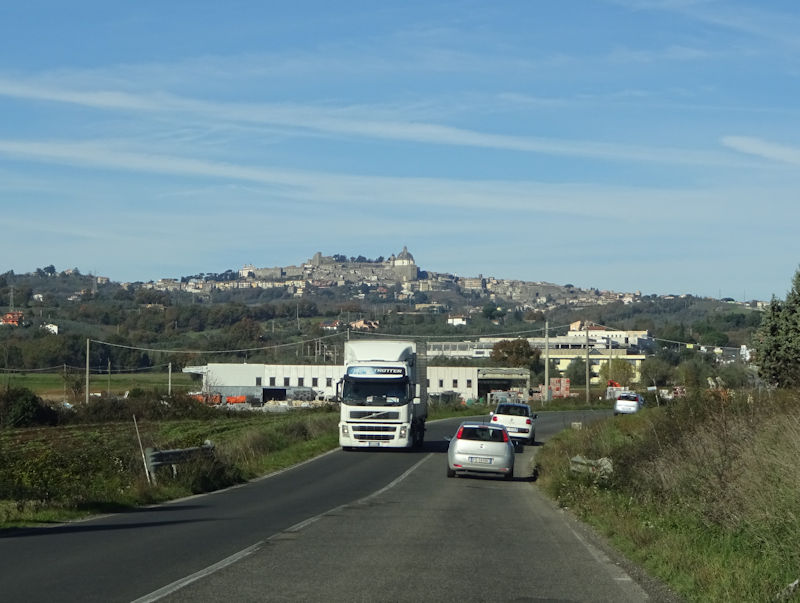
We're driving northward and passing Montefiascone just east of Lago di Bolsena . . .

to Bagnoregio, a town best known as the modern overflow from the original Etruscan city that was built farther out on the plateau looking eastward down into the Tiber valley.

We're now at the edge of that plateau, staring at what remains of the original fortified city, now called the Civita di Bagnoregio, from which the intervening stretch of soft volcanic tuff rock and underlying soft clay has washed away. People were deserting the city by the 15th century, and by 1600 most had migrated to what's now the modern town of Bagnoregio. The rest had moved out after the earthquake of 1695 collapsed quarries and subterranean chambers that dated from Etruscan times and, with further landslides all the way round, the town became nearly inaccessible.

The Ostrogoths and Lombards captured the city after the decline of the western Roman empire, and the Carolingians donated it to St Peter's Patrimony, i.e., the Papal States. The French king Charles VIII laid into it with his fancy new French artillery on his way south in 1494 to capture Naples.

The Belvedere at the end of the present plateau. St Bonaventura, eminent 13th century theologian and Minister General of the Franciscan Order, was born in the Civita, but his house is now somewhere at the bottom of the cliff. A modern Bonaventura from Civita, the writer Bonaventura Tecchi, has famously christened the city "the city that is dying" (il paese che muore).

Artificial access up to the city was carried out after the earthquake, but in 1923 a proper stone arch bridge was constructed; German soldiers blew it up. This new bridge was completed in 1965, and it's very nice.

We're hiking down to the little carpark at the foot of the walkway.
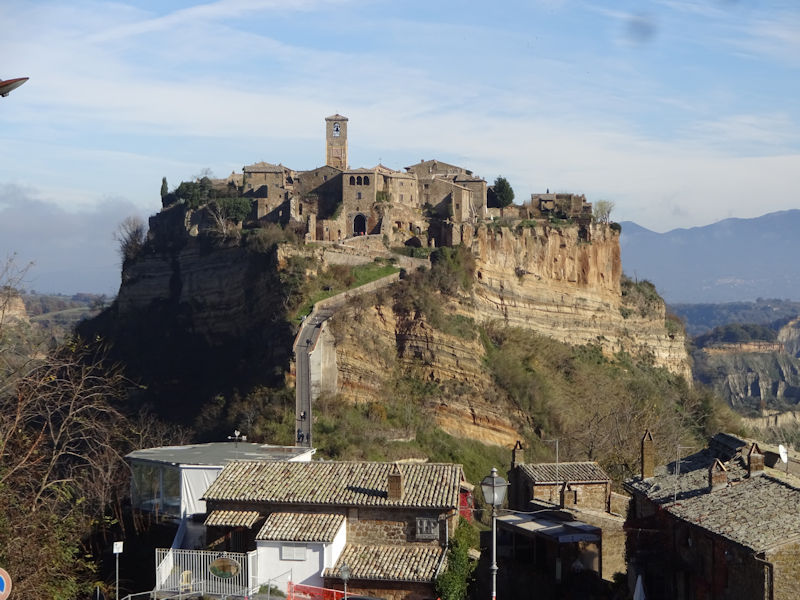
We've bought our little ticket and are keen to get at it.

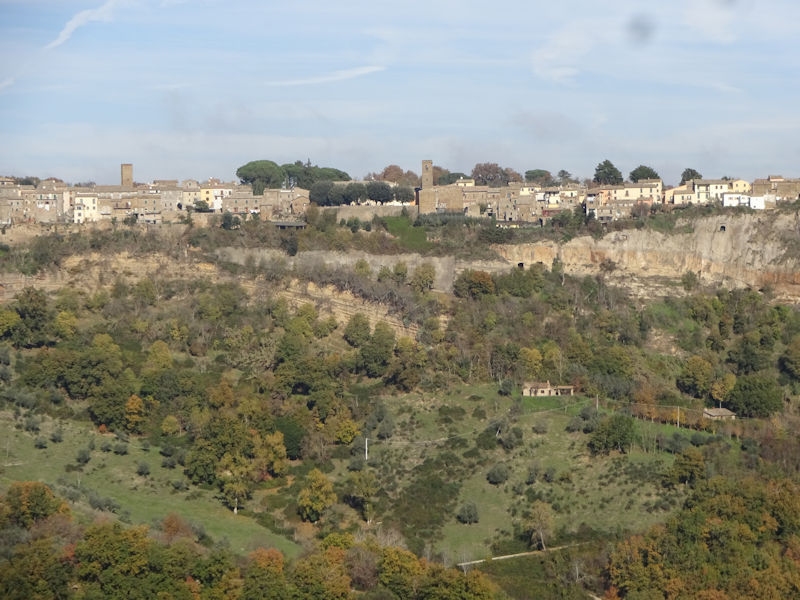
A zoom look at the countryside on the north side of the ravine
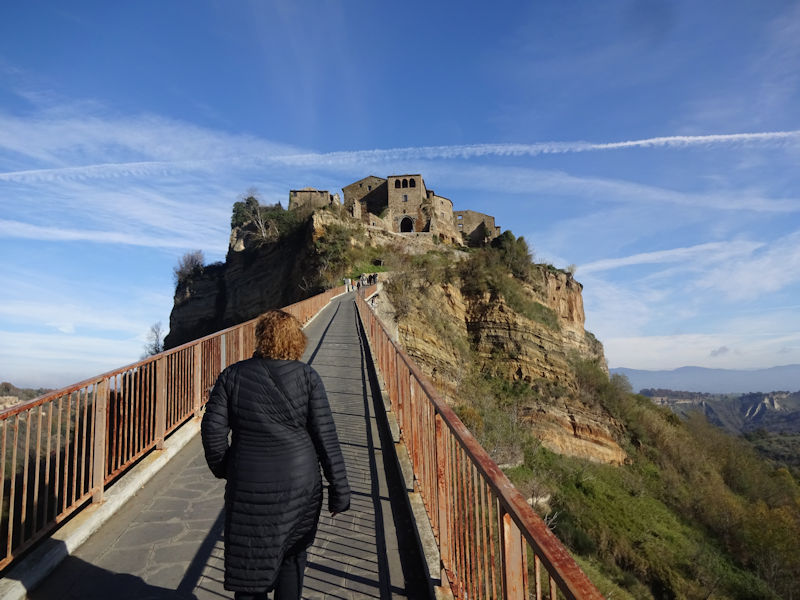
There was evidently a furious battle here between Garibaldi's volunteers and the Papal army on 5 October 1867.

We're pretty confident that this is all going to hold up for a little while longer.
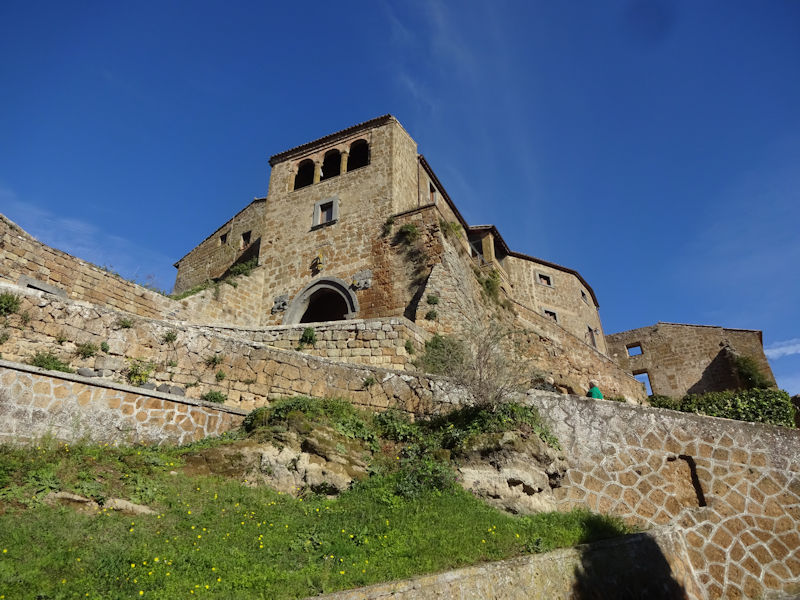
The Porta San Maria, a fortified gatehouse that was once part of the city wall, most of the rest of which is long gone.
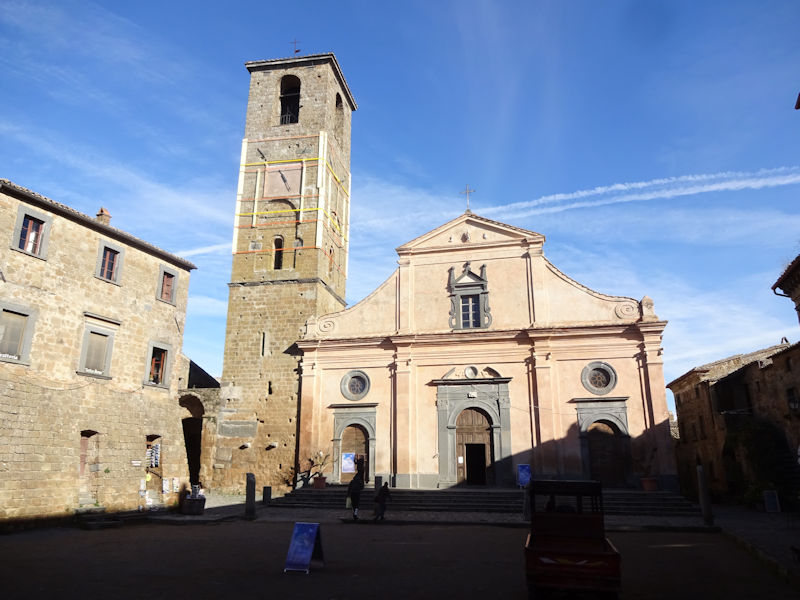
Once the cathedral of Bagnoregio, the church of San Donatus (dedicated to the former Bishop of Arezzo, supposedly martyred in 372) was built in the 13th century and the façade redesigned in the 16th, but following the 1695 earthquake the seat of the diocese was moved into a new church in the Bagnoregio suburb.
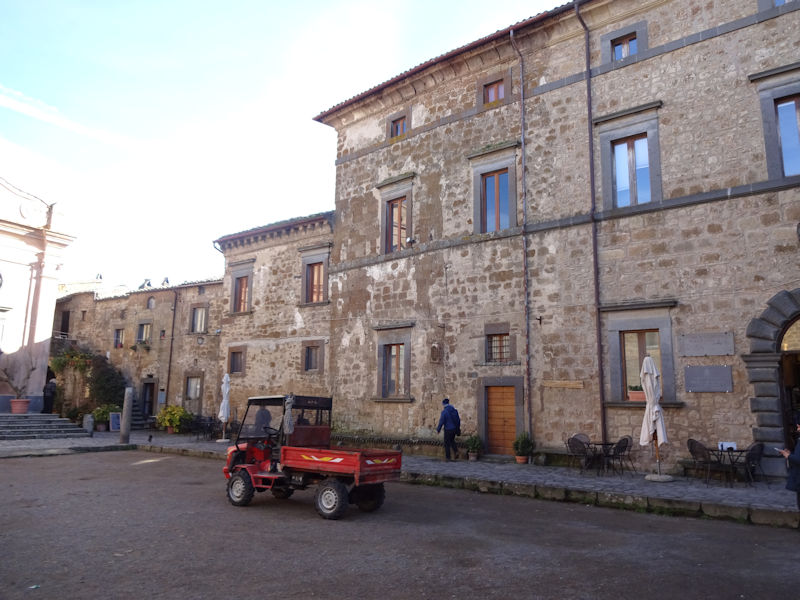
In the piazza before the church. There are donkey races in the piazza in summer; according to Coleen Simpson of Piegaro, Umbria, "As donkeys figure prominently in Civita’s history, making 40 trips a day to bring in supplies and power the olive mills, it was their day to shine! Possibly the funniest race we have seen."

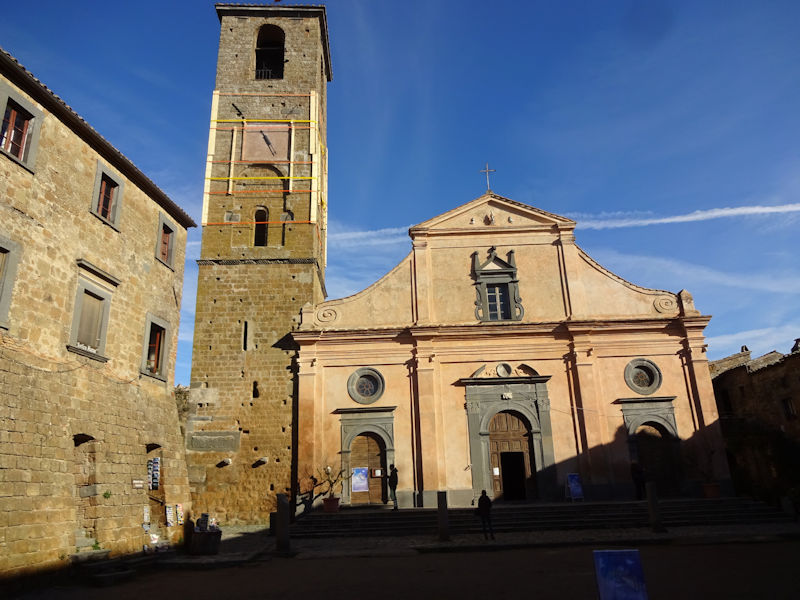
The Chiesa di San Donato, with precautionary measures on the belltower

A simple nave with two aisles

That's Sant'Ildebrando, or St Hildebrand of Lombardy, sent here to restore order and remove an unworthy bishop, then serving as Bishop himself from 856 to 873. After his death, whilst his body was on view here in the church, a woman died in childbirth and her husband brought the stillborn baby in to visit Hildebrand, so it came back to life, and when they brought it home, his dead mother did, too. So he's a saint now.

That's his whole body resting there. Except for the head, that's elsewhere. He's so venerated that he was made the co-patron saint of the city.
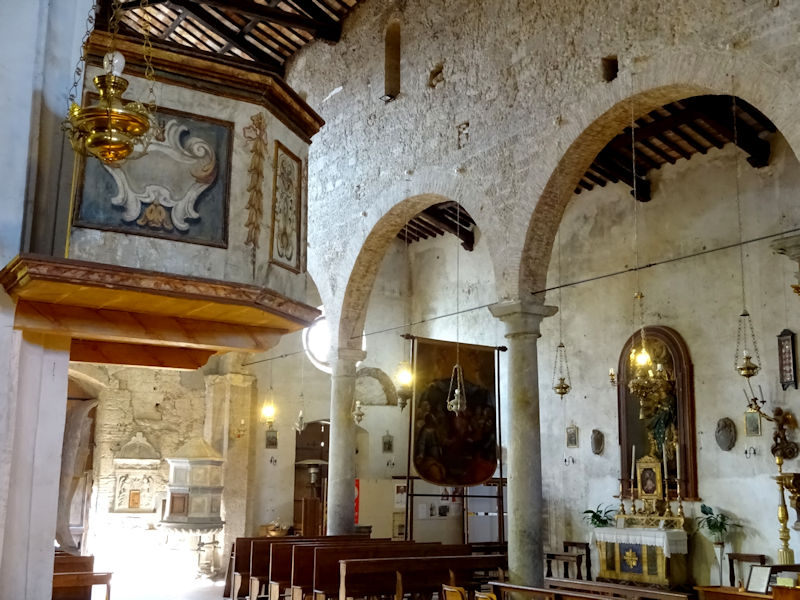
The nave and the ambo or pulpit

The high altar
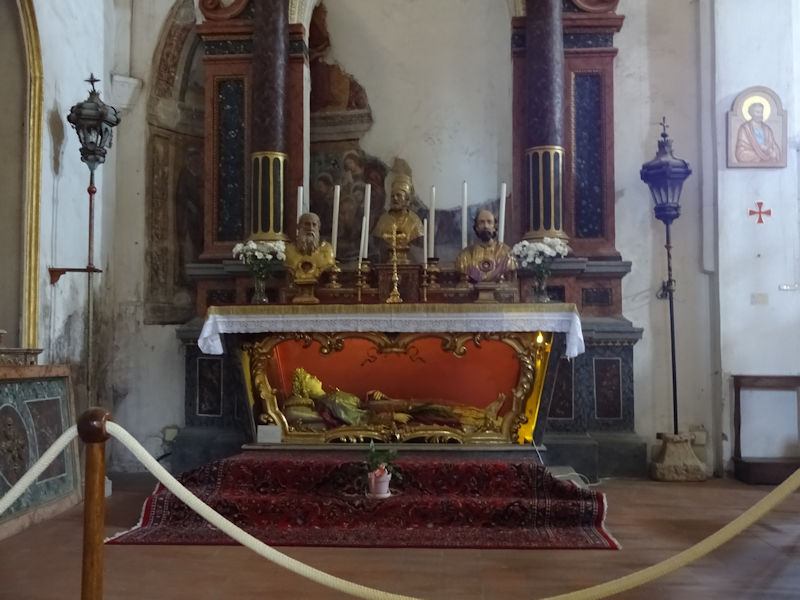
Here's the other co-patron saint, Santa Vittoria, or St Victoria of Tivoli -- said to have been martyred with her sister Anatolia in about 250 when she and her sister resisted marriage with two local noblemen, after which miracles ensued. At some point their stories circulated widely throughout Italy.
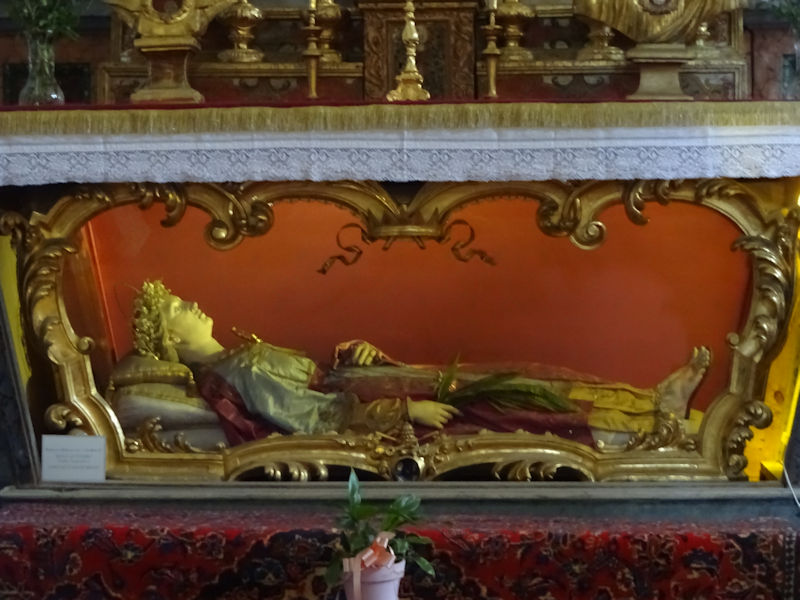
The information plaque here indicates that her 'famous relics' are here, though some sources point out that her head is elsewhere, which looks plausible. Other sources, however, take the view that she was martyred in Monteleone Sabino and her body was transported by the Abbot of Farfa to Santa Vittoria in Matenano in the Marche region in 961. (In which case, who's this?)
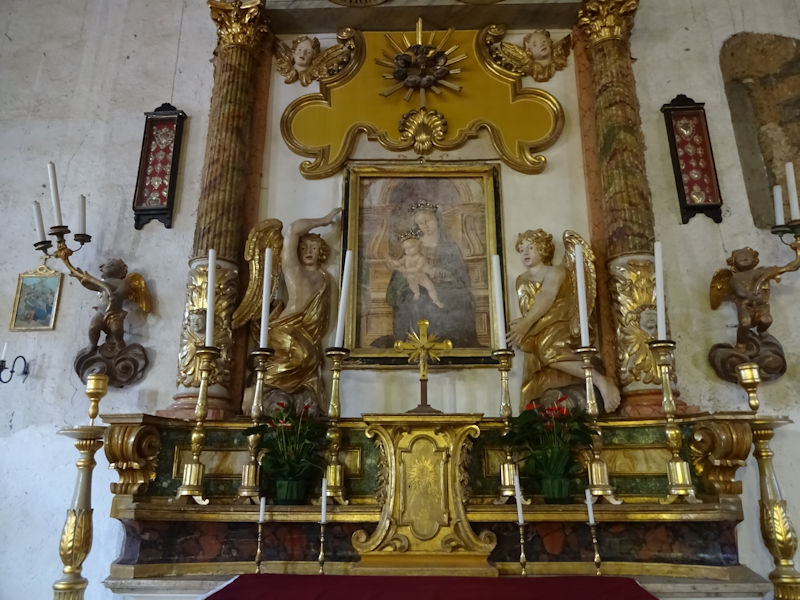

No frills

The tabernacle

Walking round town is an easy game -- the whole town is presently about 280 metres long. This is the high street, the Via Madonna della Maestà.

One restaurant's open, at least, with a busload of Japanese tourists (who've walked up, some in high heels).
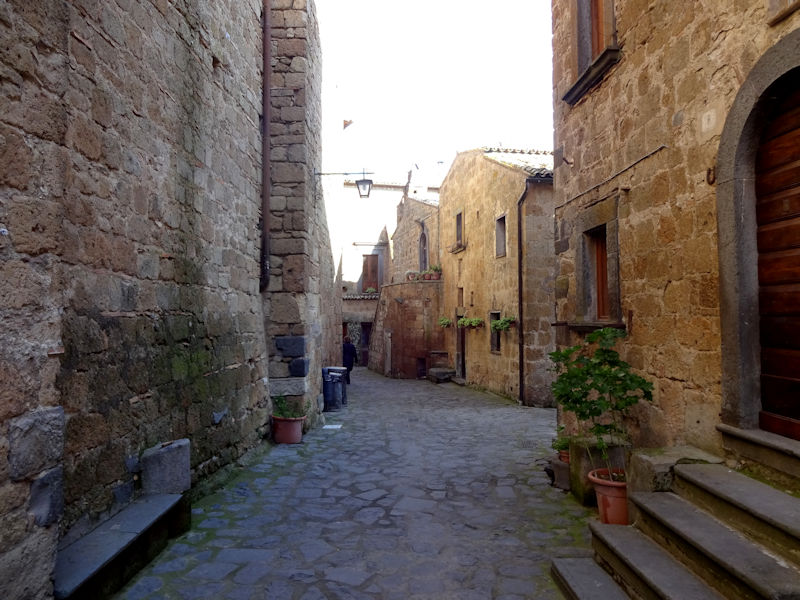
We've picked the right day to avoid the jostling crowds -- according to an article in The Telegraph last year, about current efforts to save the town, there are about 600,000 tourists a year, with a local population in winter of 6.
 |
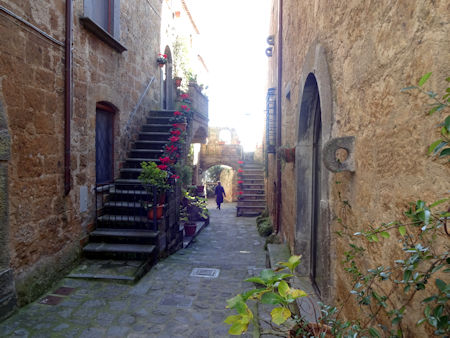 |
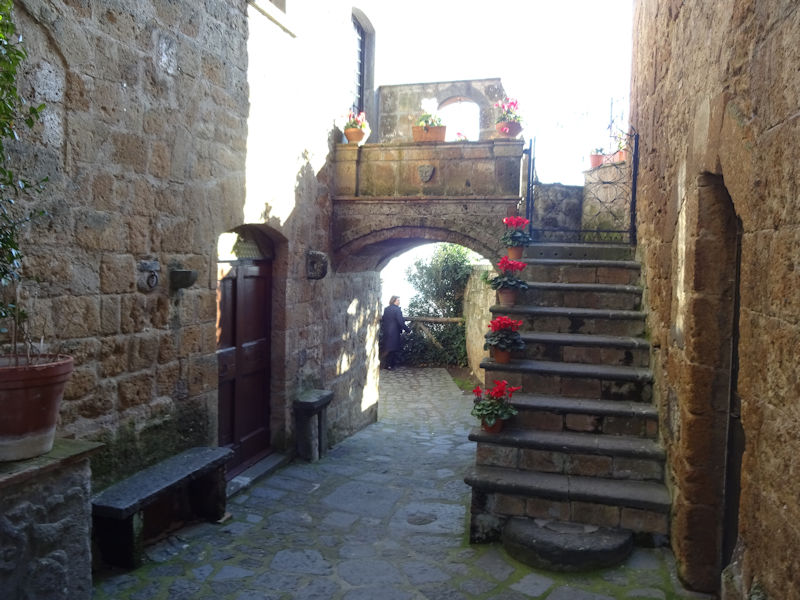
At the eastern end of town, staring into the abyss
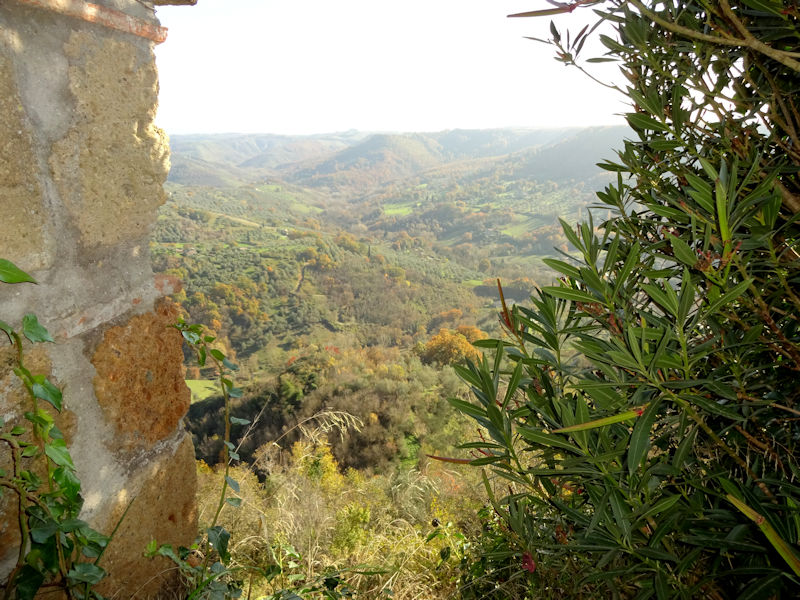
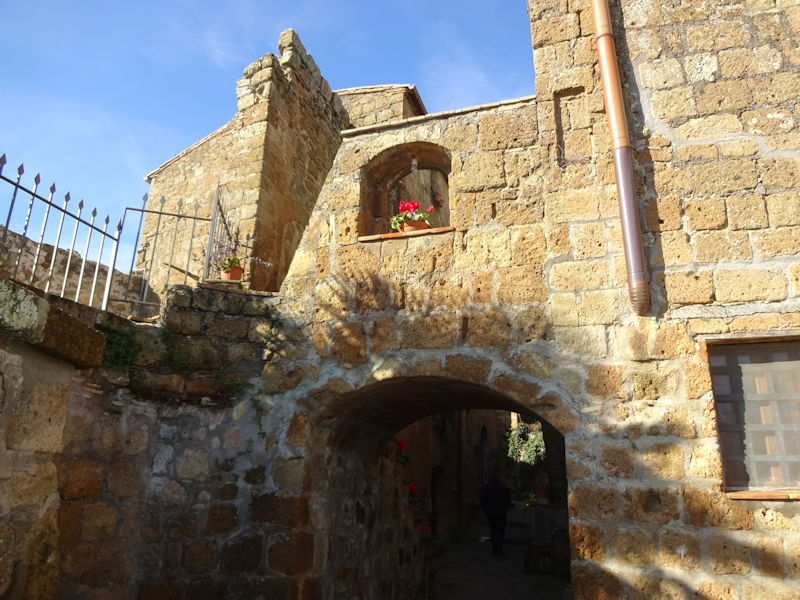
The whole town is a cul de sac. We're starting back to the main square now.

Local scenery with the zoom on

Time to go (promises to keep)

Bagnoregio over the next hill

There was a Franciscan church here between the Civita and Bagnoregio proper, but it went away.
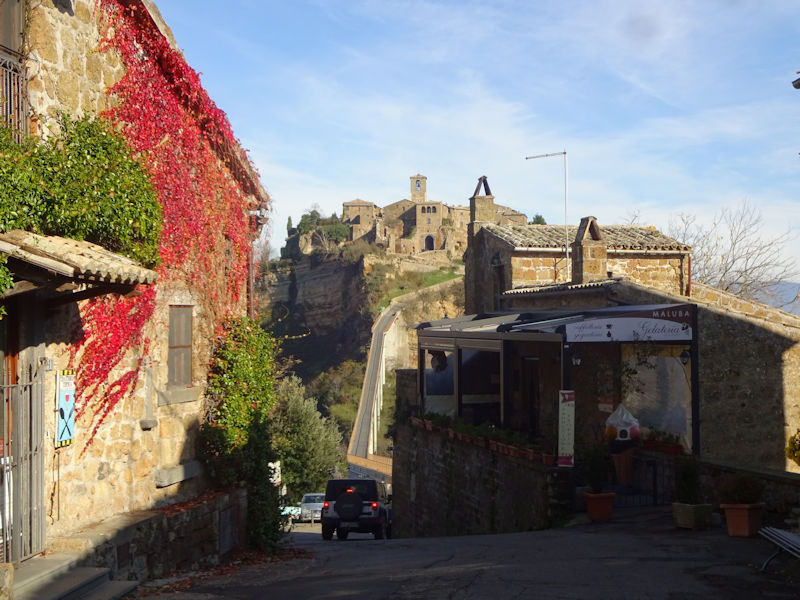
Now just a slog up to the carpark at the Belvedere, and off to Orvieto for the afternoon
       
       

 Feedback
and suggestions are welcome if positive, resented if negative, Feedback
and suggestions are welcome if positive, resented if negative,  .
All rights reserved, all wrongs avenged. Posted 13 January 2017. .
All rights reserved, all wrongs avenged. Posted 13 January 2017.
|








































